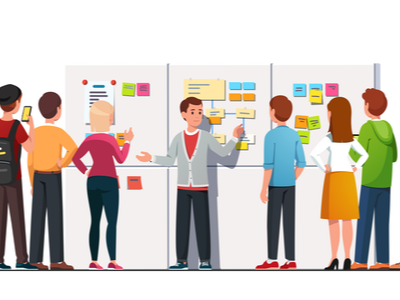Applying a gamified learning method is a new technique many institutions are adopting today. Amplayfy offers effective ways for modern learners.

The new-age learners of today can be referred to as modern learners. They have an abundance of information that they can anytime and anywhere, which can be quite overwhelming. However, if we compare today’s generation with the older ones, they have comparatively lesser attention spans.
Thus, the need to include the correct way of learning is crucial for this generation to ensure that they are engaged and attentive. What can be better than gamification techniques for learners to enhance their engagement? Many studies have proven that such strategies affect not only their performance but also their productivity. To create such engaging courses, you can check out Amplayfy for the plenty of such options offered by them.
Tips to make gamified courses:
Here are five tips to get an effective gamified course for learners and have a fun learning experience:
Tip 1: Know your students
a) Know the difficult parts
Try to find out the trouble spots of the students since it will allow you to build the best gamification techniques for the classroom. The significant reason for finding students’ trouble areas is that they will let themselves be at the forefront of the gamified strategy.
b) Conduct a Survey
You should conduct a survey in your class to design the right ways to keep them engaged. The aim is to learn about the games that students are most interested in.

Tip 2: Set the learning goals
a) Define goals
Have proper objectives in the form of learning goals that will help solve the troubles of the learners. Setting learning goals will allow students to learn concepts and grow their skills. Add behavior goals to include guiding students to concentrate and perform efficiently.
b) Design projects that allow meeting these goals
Give the students ample choices that challenge as well as suit their abilities. You can accept the projects in the form of a presentation, creative writing, paper or essay, and even a creative product that suits the given topic.
Step 3: Make a structure of the gamified learning experience
a) Modify the scoring system
For most students, marks or scores are the most frightening part of a school. The aim of gamification is to avoid the old ways of presenting marks and modify them. Try to focus more on their progress rather than on their mistakes.
You can also give points for finishing extra-curricular tasks, being active in the class, or anything that shows their effort to learn.
b) Utilize ‘stages’
You can alter how you name the topics and chapters and try referring to them as stages. Unlike teachers, students might fail to resonate while referring to topics and chapters. However, students might be able to relate when you call it stages, especially gamers.
As in games, to go to the next stage, they have to overcome the current challenges. Similarly, they have to apply the same technique for studies as well. You can try this by mentioning particular tasks as mandatory to go to the next stage. For example, unless students finish their homework or take part in class and quizzes, they won’t be allowed to go to the next stage.

Step 4: Know the resources
a) Make a manual and form teams
Like almost all video games, try to make instruction manuals that explain to the students how they should work. Your manual can hold information such as:
- How stages function
- The type of task that learners will handle
- Explain the new scoring system
- How learners can gain rewards, and what are those rewards
It will be a reference for learners, which will tell what they should do to be successful in a gamified scenario.
Step 5: Use gamification factors
a) Ensure the progress is visible to the learners
Showing the progress made by the learners is an essential element of gamification. It is almost like promoting the student community. Try to inculcate the method of displaying their growth and what they have achieved so far.
You can apply different techniques to display their progress, like a bar chart. Make and share a bar chart that holds the growth made by every learner in learning a skill. When someone gets a score on winning a quiz or finishes homework and assignments on time, you can immediately fill up his or her bar.
Those students who are making good progress will be motivated to make better growth. And those students who are not doing well will be motivated to work harder to reach that goal. In this process, every student will learn important skills.
b) Offer rewards
Giving rewards is the best way to merge gamification and learning, which is going to keep the students engaged. Many studies have proved that rewards in gamified education motivate learners to acknowledge their achievements and work harder to make progress.
Conclusion
While the process of studying and learning tends to be boring for most students, gamification can help make it an engaging experience. The tips listed above can help you implement a gamified course and make it fun for the students. Get started on it now!




